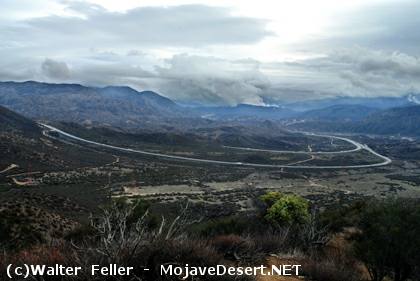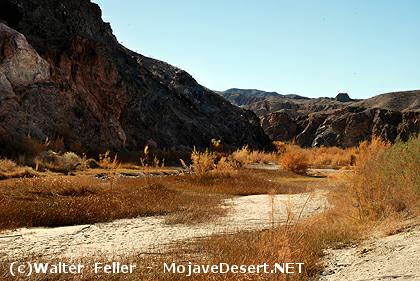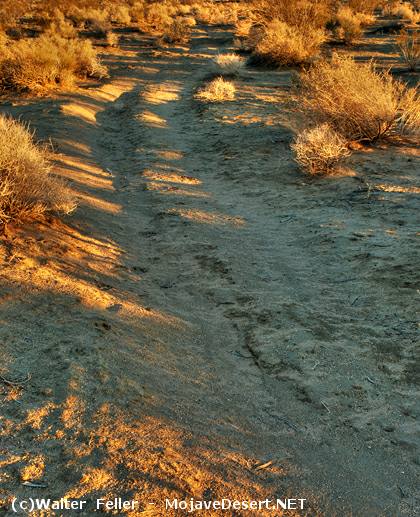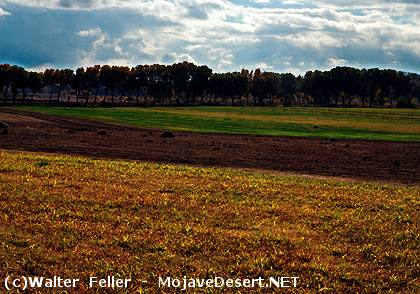Riding Out the Civil War
Thieving Bands All Over the Desert
The Los Angeles Star, which had given good coverage of the desert news considering the small size of the publication, would undoubtedly have had something to say on the matter, but the paper had ceased operating in October 1864. This was particularly regrettable because the Irish editor, Henry Hamilton, had developed a friendship with Aaron Lane, and his loss is akin to a blackout. Not until Hamilton begins the San Bernardino Guardian in February 1867 are regular reports again given on Lane and the activities on the Mojave.Three months after the Indian attack on the Mojave River settlers, a gang of horse thieves staged some impressive raids of their own in the Southland. In February of 1865, a company of "renegades, thieves and cutthroats" on their way to Arizona began by raiding some ranches in the Duarte area, stealing two herds of 50 horses each.
They continued along the foothills to the mouth of Cajon Pass, where they stole the entire herd from Martin's Ranch. The gang then headed out into the Mojave Desert and escaped with their ill-gotten booty. This rather significant theft is noteworthy in that it demonstrates that horse stealing was still a serious problem in Southern California.
Just following the February horse theft, Colonel Curtis of Drum Barracks made a trip to the desert himself for the purpose of seeing personally the extent of the Indian troubles along the Mojave River. He reported that the settlers and travelers told him the Indians had been gathering in bands consisting of anywhere from a dozen to thirty men, and would descend down from the mountains to "steal stock, rob houses, lay forced tribute on travelers," and threaten lives.
In one instance they killed two men living at the Caves, eighteen miles east of Camp Cady. The Indians were particularly eager to arm themselves with guns and ammunition, and they had secured some of the best rifles, shotguns and pistols.
The officers at Fort Mojave verified these reports, saying that the entire expanse of road from the upper crossing to Rock Springs, which was within 40 miles of the fort, was "infested" by thieving bands of Chemehuevis and Paiutes. Colonel Curtis had left Captain Benjamin West's Company C at Camp Cady with instructions to send out scouts to look for any activity by the "hostiles."
On March 1st, Captain Edward Bale, 1st Battalion of Native Cavalry, California Volunteers, was sent from Drum Barracks to relieve West and to make headquarters at Camp Cady. Thirty of Bale's soldiers were mounted, and the rest were on foot.
Captain Charles Atchison at Fort Mojave was ordered to arrest 20 of the "principal men" of the Chemehuevis, and to keep them on short rations until the parties responsible for the slayings at the Caves were surrendered over to him. Captain Bale received written orders, dated March 3rd, that gave him explicit directions on how to handle the protection of the Mojave River:
-
CAPTAIN: The colonel commanding district directs that until further orders the headquarters of your company will be at Camp Cady.
While encamped there you are charged with the duty of patrolling the road and keeping it clear of Indians from Lane's upper crossing of the Mojave to Soda Lake, and particularly to keep Indians away from the watering places.... You will keep a camp guard of at least fifteen men, and the balance of the command will patrol the road constantly, as above directed.
On April 16, 1865, the day President Lincoln was assassinated, Colonel Curtis sent a dispatch requesting that more troops be sent in order to handle impending danger from two fronts. One serious threat was the bands of hostile Indians who were still roving through the County of San Bernardino and committing depredations on the Mojave Road up to within a few miles of the County Seat.
The Colonel's other concern was the reaction of the secessionists in the area. Even though a formal surrender had been signed two days previously, the death of the President was expected to rouse some of the secessionists into action, and the Union people in San Bernardino had heard rumors that an operation of some kind was being planned.
The rumors escalated to the point where Governor Frederick Low wrote to Curtis saying that he was convinced there was reason for concern. As it turned out, there was a band of secessionists who left from the vicinity of Visalia.
On their way through Tehachapi they stole several horses and then crossed the desert north of the mountains into the Mojave River area, where they hid out in the neighboring hills between there and Holcomb Valley. However, on May 12th Colonel Curtis was able to report that Captain Atchison appeared on the scene in a timely manner, and had succeeded in scattering the would-be raiders.
This final episode was the end to the Civil War years on the Mojave River. During the war Aaron Lane, as a Northerner and ex-Army soldier, had remained steadfastly pro-Union, and he testifies to that fact in his pension records. He is also reported in the newspaper as being loyal to the U. S. Government. In fact, judging from the articles in the Star, he was doing his part in the effort to subdue the "secession spirit."
Just as the war was ending, Aaron decided there were greener pastures on the Mojave, and he sold his claim to Dr. Woodville M. Andrews and his wife, Sophie B. Andrews. The deed, dated April 6, 1865, states he was selling:
-
...that certain portion of Land lying and situate on the Mojave, County of San Bernardino, State aforesaid, and described as follows, to wit:
...Being the possessory Claim of the party of the first part, situate at the first crossing on the Mojave River, in San Bernardino County, State of California. Together with all Houses and fences and all my rights, privileges and franchises thereto incident....And also all singular the tenements, hereditaments and appurtenances thereunto....
< Previous - Next >

They continued along the foothills to the mouth of Cajon Pass, where they stole the entire herd from Martin's Ranch.

In one instance they killed two men living at the Caves, ...

... hostile Indians who were still roving through the county and committing depredations on the Mojave Road ...

... Aaron moved a few miles downstream, where he started a new enterprise on the rich farmland in the overflow of the Mojave River.